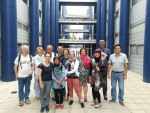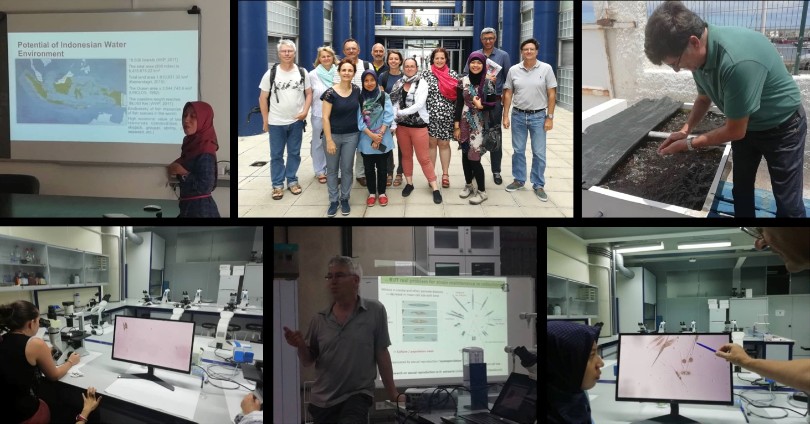From June 11, 2019 to June 14, 2019

GHaNA Workshop on diatoms reproduction was organized in Gran Canaria by Dr. Antera Martel (BEA) and Pr. Jean-Luc Mouget (UM) to learn about reproductive properties of diatoms and how to resolve problems of culture maintenance and methods for manipulating the life cycle significant for their cultivation and biotechnology.
Training was given by Nicolai Davidovitch, Olga Davidivich (Karadag Nature Reserve of the National Academy of Sciences of Ukraine), Przemysław Dąbek (University Szczecin) and Jean-Luc Mouget (Le Mans Université) to 16 trainees coming from Le Mans University, University of Nantes, Ifremer, University Brawijaya, University Tanjungpura, University of Oran and University of Gran Canaria.
In addition, presentations were given by trainees and were followed by constructive discussions in order to improve methods of strain maintenance.

During the workshop, all attendees made crossing experiments with different compatible clones of Haslea ostrearia and another diatom species, Nitzschia rectilonga. Thanks to the facilities (culture rooms, microscopes, glassware, chemicals, etc.), provided by the BEA and the University of Las Palmas de Gran Canaria (ULPGC), all stages of auxosporulation and life cycles in H. ostrearia and N. rectilonga have been observed, either on crossing experiments run on the 4th of June for all stages (gametangia and gametes, zygotes, auxospores and initial cells) or on crossing experiments run on the 11th of June for all stages (gametangia, gametes, and zygotes).
Discussions were started regarding the best way to trigger or control auxosporulation in diatoms maintained in a collection, or the best strategies to keep diatoms and other phytoplankters in collection on the long term, and also how to combine maintenance of strains and conservation of biological traits.
At the end of the workshop, all attendees got a better knowledge of the complexity of life cycles in diatoms, and of the possible interactions for strain culture and maintenance. Furthermore, new avenues have been explored for future collaborations regarding a better control of diatom sexual reproduction in collections, with possible implications for strain maintenance.